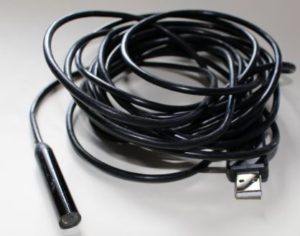 The recent issues surrounding scope-related infections continue to gather media attention. A recent article by the Pittsburgh-Post Gazette follows the story of how UPMC in Pittsburgh, PA has managed its endoscope reprocessing since a scope-related outbreak in 2012. In the article, UPMC points to its adoption of additional steps added to its reprocessing guidelines since 2012, and attributes the new steps to its experience of “no issues since”.
The recent issues surrounding scope-related infections continue to gather media attention. A recent article by the Pittsburgh-Post Gazette follows the story of how UPMC in Pittsburgh, PA has managed its endoscope reprocessing since a scope-related outbreak in 2012. In the article, UPMC points to its adoption of additional steps added to its reprocessing guidelines since 2012, and attributes the new steps to its experience of “no issues since”.
The article also examines the work of Cori Ofstead, head of Ofstead & Associates of St. Paul, Minn. Her research team has been conducting studies of endoscope reprocessing techniques in a real-world environment. Her recent study concluded that seemingly consistent and stringent reprocessing procedures can still leave endoscopes with highly infectious residue. As the article by Jill Daly explains:
“In June’s American Journal of Infection Control, Ms. Ofstead reported the results of her study of sterilization for flexible ureteroscopes at two large multispecialty health care facilities in the Midwest. Despite reprocessing, all 16 ureteroscopes had visible irregularities and contamination with microbial growth, hemoglobin, protein or a chemical indicating the presence of living cells. The study concluded that there should be regular checks of reprocessing practices, routine cleaning verification tests and visual inspections according to the accepted guidelines.
“I believe this is a highly complex task that should be done by highly trained [specialists],” she said. “There may be factors that go beyond the human factors. Scopes may not be as durable as we thought.”
Dr. Pontzer [director of infection prevention at UPMC] said ureteroscopes require a special touch: “They’re small, flexible and have lasers in them. They are delicate and take some careful cleaning without damaging. As soon as they are used, they are manually cleaned, then go through disinfection, then the sterilization process.”
UPMC has had no outbreaks of infection from scopes since the ERCP experience, and Dr. Pontzer is confident new endoscope practices are working.
He explained UPMC has found it is best to clean the channels of each scope immediately after use. No bedside precleaning was done in the two locations in the Ofstead ureteroscope study.
“After they have been reprocessed, before they are used again, we make a visual exam.”
That step is important, he said. “Sometimes [there is something] overlooked.”
In situations like the ureteroscope study, where contamination is detected, Dr. Pontzer said, “[The scopes] may not be looked at quickly enough. … When they’re done being processed, they are hung out to dry. They have to be hung correctly, dried correctly. Before using [a scope], the standard process is to look at it. … They’re supposed to inspect it before they utilize it.””
Read the entire article here: Endoscope safety: how clean are those reusable medical scopes?
Many of the emerging best practices surrounding endoscope reprocessing require hospitals and endoscopy clinics to re-examine the way they are handling used scopes. Many of the steps require additional pre-cleanings and visual inspections to make sure that any risk of infection is minimized along the way, adding additional checkpoints to catch certain issues that can be overlooked.
If your department is looking at re-designing its scope reprocessing practices, having software that can allow you to track each step along the way may be a critical component. Systems such as iRIScope can change and grow with your organization to manage the endoscope cleaning process and ensure that all your new or improved steps are being followed every time.
